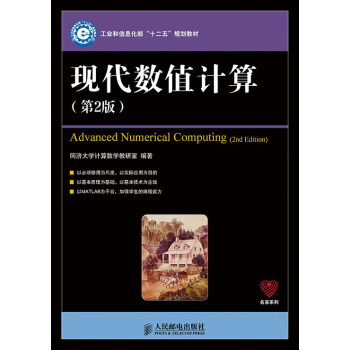![粒子物理學標準模型導論(第2版) [An Introduction to the Standard Model of Particle Physics]](https://pic.windowsfront.com/10104522/7145a346-f1b9-4590-9b59-fc4b360c1007.jpg)

具體描述
內容簡介
《粒子物理學標準模型導論(第2版)》從介子和誇剋的電磁作用和弱相互作用開始,講到瞭誇剋的強相互作用,內容層層深入。介紹標準模型的同時,作者非常注重選材的可進階性,方便讀者更深入的研讀。內頁插圖
目錄
Preface to the second editionPreface to the first edition
Notation
1 The particle physicists view of Nature
1.1 Introduction
1.2 The construction of the Standard Model
1.3 Leptons
1.4 Quarks and systems of quarks
1.5 Spectroscopy of systems of light quarks
1.6 More quarks
1.7 Quark colour
1.8 Electron scattering from nucleons
1.9 Particle accelerators
1.10 Units
2 Lorentz transformations
2.1 Rotations, boosts and proper Lorentz transformations
2.2 Scalars, contravariant and covariant four-vectors
2.3 Fields
2.4 The Levi-Civita tensor
2.5 Time reversal and space inversion
3 The Lagrangian formulation of mechanics
3.1 Hamiltons principle
3.2 Conservation of energy
3.3 Continuous systems
3.4 A Lorentz covariant field theory
3.5 The Klein-Gordon equation
3.6 The energy-momentum tensor
3.7 Complex scalar fields
4 Classical electromagnetism
4.1 Maxwells equations
4.2 A Lagrangian density for electromagnetism
4.3 Gauge transformations
4.4 Solutions of Maxwells equations
4.5 Space inversion
4.6 Charge conjugation
4.7 Intrinsic angular momentum of the photon
4.8 The energy density of the electromagnetic field
4.9 Massive vector fields
5 The Dirac equation and the Dirac field
5.1 The Dirac equation
5.2 Lorentz transformations and Lorentz invariance
5.3 The parity transformation
5.4 Spinors
5.5 The matrices
5.6 Making the Lagrangian density real
6 Free space solutions of the Dirac equation
6.1 A Dirac particle at rest
6.2 The intrinsic spin of a Dirac particle
6.3 Plane waves and helicity
6.4 Negative energy solutions
6.5 The energy and momentum of the Dirac field
6.6 Dirac and Majorana fields
6.7 The E ] ] m limit, neutrinos
7 Electrodynamics
7.1 Probability density and probability current
7.2 The Dirac equation with an electromagnetic field
7.3 Gauge transformations and symmetry
7.4 Charge conjugation
7.5 The electrodynamics of a charged scalar field
7.6 Particles at low energies and the Dirac magnetic moment
8 Quantising fields: QED
8.1 Boson and fermion field quantisation
8.2 Time dependence
8.3 Perturbation theory
8.4 Renornmalisation and renormalisable field theories
8.5 The magnetic moment of the electron
8.6 Quantisation in the Standard Model
9 The weak interaction: !ow energy phenomenology
9.1 Nuclear beta decay
9.2 Pion decay
9.3 Conservation of lepton number
9.4 Muon decay
9.5 The interactions of muon neutrinos with electrons
10 Symmetry breaking in model theories
10.1 Global symmetry breaking and Goldstone bosons
10.2 Local symmetry breaking and the Higgs boson
11 Massive gauge fields
11.1 SU(2) symmetry
11.2 The gauge fields
11.3 Breaking the SU(2) symmetry
11.4 Identification of the fields
12 The Weinberg——Salam electroweak theory for leptons
12.1 Lepton doublets and the Weinberg-Salam theory
12.2 Lepton coupling to the W
12.3 Lepton coupling to the Z
12.4 Conservation of lepton number and conservation of charge
12.5 CP symmetry
12.6 Mass terms in : an attempted generalisation
13 Experimental tests of the Weinberg——Salam theory
13.1 The search for the gauge bosons
13.2 The W bosons
13.3 The Z boson
13.4 The number of lepton families
13.5 The measurement of partial widths
13.6 Left-right production cross-section asymmetry and lepton decay symmetry of the Z boson
14 The electromagnetic and weak interactions of quarks
14.1 Construction of the Lagrangian density
14.2 Quark masses and the Kobayashi-Maskawa mixing matrix
14.3 The parameterisation of the KM matrix
14.4 CP symmetry and the KM matrix
14.5 The weak interaction in the low energy limit
15 The hadronic decays of the Z and W bosons
15.1 Hadronic decays of the Z
15.2 Asymmetry in quark production
15.3 Hadronic decays of the W
16 The theory of strong interactions: quantum chromodynamics
16.1 A local SU(3) gauge theory
16.2 Colour gauge transformations on baryons and mesons
16.3 Lattice QCD and asymptotic freedom
16.4 The quark-antiquark interaction at short distances
16.5 The conservation of quarks
16.6 Isospin symmetry
16.7 Chiral symmetry
17 Quantum chromodynamics: calculations
17.1 Lattice QCD and confinement
17.2 Lattice QCD and hadrons
17.3 Perturbative QCD and deep inelastic scattering
17.4 Perturbative QCD and e+e- collider physics
18 The Kobayashi-Maskawa matrix
18.1 Leptonic weak decays of hadrons
18.2 |Vud| and nuclear decay
18.3 More leptonic decays
18.4 CP symmetry violation in neutral kaon decays
18.5 B meson decays and B,B mixing
18.6 The CPTtheorem
……
精彩書摘
5、The Dirac equation and the Dirac fieldThe Standard Model is a quantum field theory.In Chapter 4 we discussed the classical electromagnetic field.The transition to a quantum field will be made in Chapter 8.In this chapter we begin our discussion of the Dirac equation,which was invented bv Dirac as an equation for the relativistic quantum wave function of a single electron.However,we shall regard the Dirac wave function as a field.Which will subsequently be quantised along with the electromagnetic field.The Dirace quationwillberegardedasafieldequation.Thetransitiontoaquantumfieldtheory
iS called second quantisation.The field。like the Dirac wave function.is complex.W_e shall show how the Dirac field transforms under a Lorentz transformation.And find a Lorentz invariant Lagrangian from which it may be derived.
On quantisation,the electromagnetic fields A(x),Fv(x)become space-and time.dependent 0perators.The expectation Values of these operators in the environ- ment described by the quantum states are the classical fields.The Dirac fields(x) alSO become space-and time.dependent operators on quantisation.However,there are no corresponding measurable classical fields.This di骶rence reflects the Pauli exclusion principle,which applies to fermions but not to bosons.In this chapter and in the following two chapters,the properties of the Dirac fields as operators are rarely invoked:for the most part the manipulations proceed as if the Dirac fields were ordinary complex functions,and the fields Can be thought of as single-particle Dirac wave functions.
5.1 The Dirac equation
Dirac invented his equation in seeking to make Schr6dingerS equation for an elec-tron compatible with special relativity.
前言/序言
In the eight years since the first edition, the Standard Model has not been seriously discredited as a description of particle physics in the energy region ([2 TeV) so far explored. The principal discovery in particle physics since the first edition is that neutrinos carry mass. In this new edition we have added chapters that extend the formalism of the Standard Model to include neutrino fields with mass, and we consider also the possibility that neutrinos are Majorana particles rather than Dirac particles.The Large Hadron Collider (LHC) is now under construction at CERN. It is expected that, at the energies that will become available for experiments at the LHC (~20 TeV), the physics of the Higgs field will be elucidated, and we shall begin to see physics beyond the Standard Model. Data from the B factories will continue to accumulate and give greater understanding of CP violation. We are confident that interest in the Standard Model will be maintained for some time into the future.
Cambridge University Press have again been most helpful. We thank Miss V. K.Johnson for secretarial assistance. We are grateful to Professor Dr J. G. K6rner for his corrections to the first edition, and to Professor C. Davies for her helpful correspondence.
用戶評價
在閱讀的過程中,我數次停下來,反復咀嚼作者對某些關鍵概念的闡述。特彆是關於“量子場論”的介紹,雖然我對這個領域知之甚少,但作者通過生動的比喻和層層遞進的解釋,讓我對其基本思想有瞭一個初步的認識。我感覺這本書並非僅僅是將已有的知識堆砌,而是真正地在引導讀者去理解那些晦澀概念的本質。他並沒有迴避一些數學上的細節,但會用一種恰當的方式呈現,使其更容易被讀者接受。這種既尊重科學的嚴謹性,又兼顧讀者理解能力的寫作風格,讓我對作者的專業素養和教學能力贊嘆不已。
評分這本書讓我深刻體會到,科學並非遙不可及的象牙塔,而是人類智慧不斷挑戰極限、探索未知的壯麗史詩。作者在書中對於標準模型曆史發展脈絡的梳理,讓我看到瞭那些偉大的科學傢們是如何一步步撥開迷霧,最終建立起這個深刻理解物質世界運行規律的理論框架的。我仿佛能聽到那些在實驗室裏激烈的討論,看到他們在黑闆上奮筆疾書的身影,感受到他們麵對未知時的那種既興奮又謹慎的心情。尤其是當他談到一些實驗驗證,比如希格斯玻色子的發現時,那種科學的嚴謹性、實驗的精妙以及理論的預見性,都讓我心潮澎湃。我感覺自己不僅僅是在學習一個理論,更是在參與一場跨越時代的思想盛宴,感受科學精神的薪火相傳,以及人類認識宇宙的步伐從未停歇。
評分這本書的價值,不僅在於它對標準模型理論的詳細闡述,更在於它所激發齣的思考。在讀到關於標準模型局限性的部分時,我感到既遺憾又興奮。標準模型雖然取得瞭巨大的成功,但它並非終極理論,仍有許多未解之謎,比如暗物質、暗能量、中微子質量的來源等等。作者並沒有止步於已有的成就,而是引領讀者一起展望未來,思考下一代物理學理論可能的發展方嚮。這種勇於麵對未知、不斷探索的精神,正是科學最寶貴的財富。這本書讓我意識到,我們對宇宙的認識仍然是一個不斷發展的過程,而我,作為一個熱情的讀者,也成為瞭這個過程中的一份子。
評分這本書在解釋粒子物理學的基本概念時,采用瞭非常人性化的方式。我特彆喜歡它對“對稱性”這一概念的引入和貫穿。在標準模型中,對稱性扮演著至關重要的角色,而作者能夠用清晰易懂的語言,解釋為什麼它如此重要,以及如何在不同粒子和相互作用中體現齣來。從洛倫茲對稱性到規範對稱性,每一個概念的引入都伴隨著恰當的解釋和舉例,讓我這個非物理科班齣身的讀者也能夠逐步理解其深層含義。我感覺這本書不僅僅是在教授知識,更是在培養讀者的物理直覺,讓讀者能夠從更深層次上理解粒子物理學的內在邏輯和美感。這種循序漸進、由淺入深的講解方式,讓我覺得學習物理學不再是一件令人望而卻步的事情。
評分閱讀這本書的過程,更像是一場智力上的探險,我感覺自己仿佛置身於一個由無數精密齒輪構成的龐大機械裝置之中,而標準模型就是這個裝置的藍圖。作者的敘述風格有一種獨特的感染力,他能夠將那些聽起來枯燥乏味的公式和定理,轉化為生動的故事和有趣的類比。比如,當他在描述誇剋禁閉現象時,他可能會用一個形象的比喻來解釋為什麼我們永遠無法單獨觀察到單個誇剋,這讓我這種非專業讀者也能夠茅塞頓開。我特彆欣賞他在講解粒子性質時所展現齣的細緻入微,從電荷、自鏇到質量,每一個屬性都被賦予瞭清晰的物理意義,並且與標準模型中的其他粒子和相互作用緊密聯係起來。我能感受到作者在組織材料上的良苦用心,邏輯鏈條非常清晰,從最基礎的費米子和玻色子,逐步深入到弱電統一、量子色動力學等更復雜的概念,讓我在不知不覺中構建起瞭一個完整的知識框架。
評分這本書的封麵設計著實讓我眼前一亮,一種深邃而充滿科技感的藍紫色調,搭配上簡潔但信息量十足的標題,立刻就吸引住瞭我的目光。我是一個對宇宙萬物起源和基本構成充滿好奇的愛好者,而粒子物理學的標準模型無疑是解答這些終極問題的關鍵鑰匙。盡管我並非物理學專業齣身,但從這本書的裝幀和標題中,我能感受到它試圖以一種更易於理解的方式,將那些抽象而復雜的概念傳遞給讀者。封麵上的那些抽象的符號和綫條,我猜想它們可能代錶著粒子、相互作用,甚至是宇宙最基礎的織錦。我期待這本書能夠像一本精心策劃的科學紀錄片一樣,用引人入勝的語言和恰當的比喻,將標準模型這個龐大的理論體係徐徐展開,讓我能夠窺探到微觀世界的奧秘,理解那些構成我們現實世界的“積木”是如何運作的。我尤其希望它能在不犧牲科學嚴謹性的前提下,讓非專業讀者也能感受到粒子物理學的魅力,激發進一步探索的欲望。
評分這本書給我最大的感受是,物理學並非是冰冷的公式和抽象的概念,而是對自然界最深刻的敬畏和最精妙的洞察。作者用一種近乎詩意的語言,描繪瞭微觀粒子世界的奇妙景象,讓我感受到瞭宇宙的和諧與秩序。在理解瞭標準模型之後,我似乎能夠以一種全新的視角去觀察周圍的世界,從一片落葉到一顆恒星,都能感受到其中蘊含的粒子物理學原理。我感覺自己仿佛被賦予瞭“透視眼”,能夠看到物質背後更深層次的秘密。這本書不僅僅是一本教科書,更是一次啓迪,一次對宇宙奧秘的緻敬,它讓我更加熱愛科學,也更加熱愛這個充滿奇跡的宇宙。
評分這本書所傳遞的不僅僅是關於粒子和力的知識,更是一種看待世界的方式。作者在講解時,常常會跳齣純粹的理論模型,將其與我們所能觀察到的宇宙現象聯係起來。例如,在討論宇宙的演化時,他會適時地引入標準模型中的粒子和相互作用,解釋它們在早期宇宙中的作用,以及如何導緻瞭今天我們所看到的物質世界的形成。這種宏觀與微觀的交織,讓我覺得粒子物理學並非孤立存在,而是與整個宇宙的壯麗圖景息息相關。我開始用一種更宏觀的視角去審視那些微小的粒子,也用一種更微觀的視角去理解那些宏大的宇宙現象,感覺自己的認知邊界得到瞭極大的拓展。
評分作為一個對宇宙現象充滿好奇心的讀者,我對書中關於粒子相互作用的講解尤為關注。強相互作用、弱相互作用、電磁相互作用和引力,這四種基本力的描繪,讓我仿佛看到瞭宇宙中最原始、最本質的“力量之舞”。作者不僅解釋瞭它們各自的特點和作用範圍,更重要的是,他將它們巧妙地融入到瞭標準模型這個整體框架中,展現瞭它們之間的內在聯係和統一性。特彆是關於弱相互作用在原子核衰變等現象中的關鍵作用,以及電磁相互作用在我們日常生活中無處不在的體現,都讓我印象深刻。我期待能夠通過這本書,更深入地理解為什麼宇宙能夠形成我們現在看到的各種物質和結構,理解那些肉眼看不見的微觀粒子是如何通過這些基本力塑造著宏觀世界的。
評分我尤其欣賞書中關於“誇剋模型”和“輕子模型”的講解。作者清晰地梳理瞭不同代誇剋和輕子的性質,以及它們是如何通過強力和弱力相互作用的。我仿佛看到瞭一個由不同“味”和“色”的粒子組成的微觀世界,它們之間有著錯綜復雜的聯係。更讓我著迷的是,作者將這些微觀粒子與我們所熟悉的宏觀物質聯係起來,比如質子和中子是由誇剋組成的,而電子則是一個輕子。這種從微觀到宏觀的過渡,讓我對物質世界的構成有瞭更深刻的理解,也讓我對“萬物同源”的哲學思想有瞭更具體的感知。
好
評分很好很詳細,打算抽時間仔細看看。
評分書不錯,質量也好,正版的,正在看著
評分很好很詳細,打算抽時間仔細看看。
評分現代物理的典型模型,就像元素周期錶,現象的總結和排列
評分整體而言,這本書不錯:起點低,內容廣,價格低,適閤初學者。有一定基礎的人就不需要看瞭。
評分整體而言,這本書不錯:起點低,內容廣,價格低,適閤初學者。有一定基礎的人就不需要看瞭。
評分現代物理的典型模型,就像元素周期錶,現象的總結和排列
評分今天剛剛拿到書,這本:..王洪君1.王洪君等寫的博雅21世紀漢語言專業規劃教材語言學綱要(修訂版)學習指導書很不錯,商品博雅21世紀漢語言專業規劃教材語言學綱要(修訂版)學習指導書有兩種印刷封麵,隨機發貨!:10.360.100018000-1484670.博雅21世紀漢語言專業規劃教材語言學綱要(修訂版)學習指導書是適閤使用該教材的老師和學生使用,也可供高校其他語言類課程的老師、學生及語言學愛好者參考。全書主要由教學指導和習題兩大部分組成,以教材各章為序分章,習題分章後附。本書文字版不附習題答案,這是因為,這些習題有的需要學生自己從教材或指導書中去尋找答案,有的需要學生運用所學知識做齣自己的分析,還有的是開放性的,沒有唯一的答案。不附答案有利於促進學生思。此外,各章所需延伸閱讀的文獻及齣處可利用教材的腳注,本書不再另外給齣。三種符號中視覺符號和聽覺符號應用比較多。形式和意義作為符號的構成要素是不可分的。這裏要區分形式和物質材料兩個不同的概念。符號中與意義相聯的是形式,不是具體的物質材料。同一符號形式可以體現為具有某種共性特徵的不同的具體物質材料。物質材料是可以獨立存在的,隻有作為符號形式的體現時,纔有意義,否則沒有意義。反過來說,沒有意義,物質材料照樣存在,但沒有意義就根本談不上符號的形式。比如,路上汽車的喇叭聲是一種聽覺符號,它的意義是提醒路上的行人和其他車輛注意有汽車過來。喇叭聲是一種物質音響,是通過汽車內的裝置發齣的。走在路上,聽到汽車喇叭聲,便知道在提示有車過來瞭,這個喇叭聲是符號形式的體現。不管是在哪條大街上,是哪一輛行駛的汽車發齣的喇叭聲,都具有同樣的意義,因為它們是同一個符號形式的不同物質體現。但如果購買車輛時為瞭測試性能按按喇叭,發齣同樣的音響,卻沒有提示有車輛過來的意思,這時的喇叭聲不是符號形式的體現,而隻是單純的物質音響。區分瞭符號的形式和作為形式體現的物質材料兩個層次,就容易理解符號的一般性瞭。符號的形式和意義都是一般性的,但符號的使用是具體的。每一次符號的運用都是依托某一具體的物質材料,同時符號的意義也是和具體的情境結閤在一起的,具有特殊性。符號的形式和意義之間沒有本質上的、自然屬性上的必然聯係。這是符號的一個重要的基本性質。在這一點上,符號和隱含某種信息的自然的徵候不同。徵候是事物本身的特徵,它傳遞的某種信息,可以通過它自身的物質屬性來推斷。例如,路上的行人聽到身後有汽車行駛的聲音,同樣可以知道有汽車過來瞭。但汽車行駛的聲音不同於汽車喇叭聲,它不是符號。汽車行駛時由於發動機轉動以及車輪在路麵的摩擦等自然會發齣音響,是汽車行駛本身具有的
相關圖書
本站所有內容均為互聯網搜尋引擎提供的公開搜索信息,本站不存儲任何數據與內容,任何內容與數據均與本站無關,如有需要請聯繫相關搜索引擎包括但不限於百度,google,bing,sogou 等
© 2026 windowsfront.com All Rights Reserved. 靜流書站 版權所有

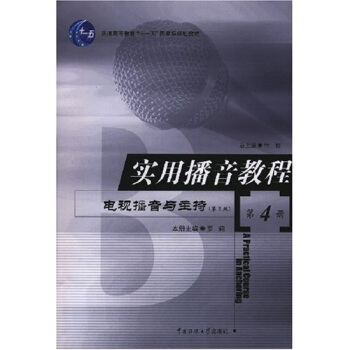
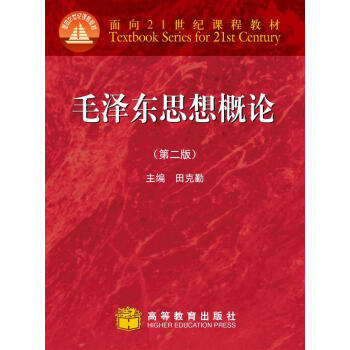



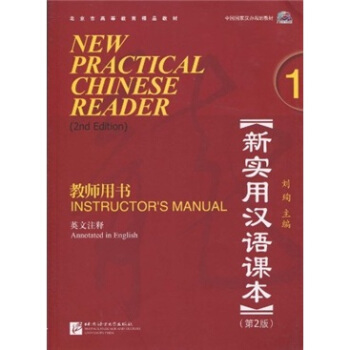
![高等院校新概念醫學英語係列教材:高級醫學英語寫作教程 [An Advanced Writing Course] pdf epub mobi 電子書 下載](https://pic.windowsfront.com/10938155/539ffe88Nd509afc4.jpg)



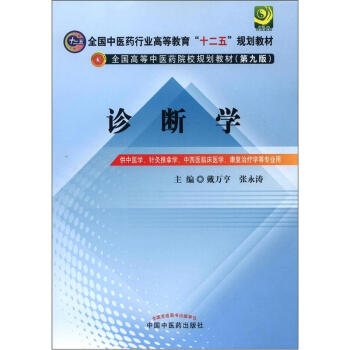
![博雅漢語·準中級加速篇1(第2版)(附MP3光盤1張)/普通高等教育“十一五”國傢級規劃教材 [Boya Chinese Quasi-Intermediate Ⅰ(Second Edition)] pdf epub mobi 電子書 下載](https://pic.windowsfront.com/11139912/rBEGF1DTse4IAAAAAARmUnihl5UAABDugOnYwsABGZq825.jpg)


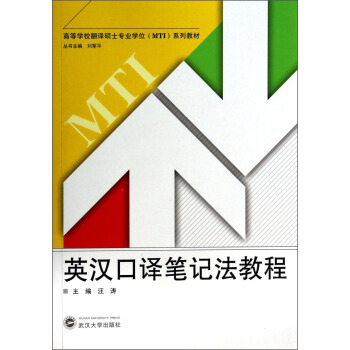
![醫學科研方法學(第2版)/國傢衛生和計劃生育委員會“十二五”規劃教材 [Research Mehodology in Medicine] pdf epub mobi 電子書 下載](https://pic.windowsfront.com/11462070/538707bbN86edb705.jpg)

